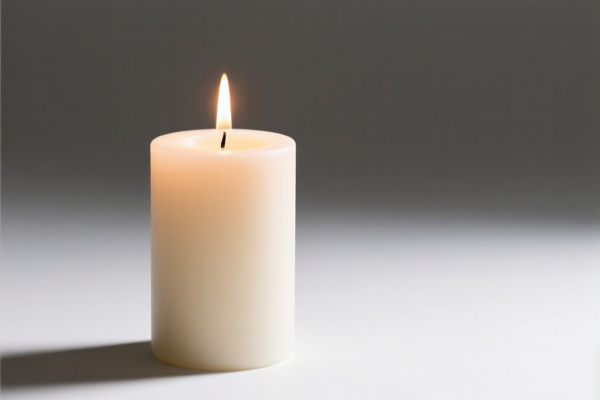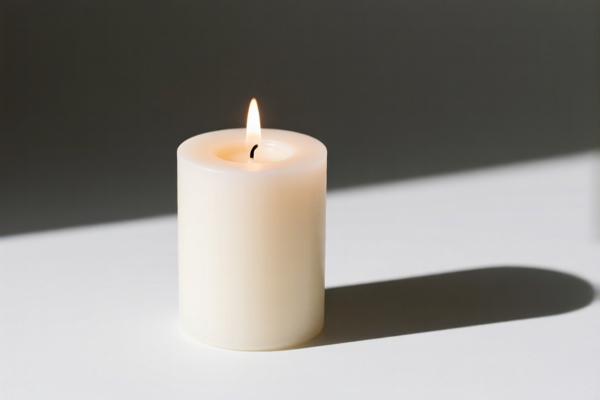| HS Code | Official Doc | Tariff Rate | Origin | Destination | Effective Date |
|---|---|---|---|---|---|
| 3605000030 | Doc | 37.5% | CN | US | 2025-05-12 |
| 3605000060 | Doc | 37.5% | CN | US | 2025-05-12 |
| 3606908000 | Doc | 42.5% | CN | US | 2025-05-12 |
| 3606903000 | Doc | 35.9% | CN | US | 2025-05-12 |
| 9114904000 | Doc | 46.3% | CN | US | 2025-05-12 |
| 9114905000 | Doc | 41.7% | CN | US | 2025-05-12 |
| 9111800000 | Doc | 3.6¢ each + 7.6%+37.5% | CN | US | 2025-05-12 |
| 9111907000 | Doc | 43.9% | CN | US | 2025-05-12 |




Ear Candle
An ear candle, also known as hopi ear candle, is a hollow tube, typically made of beeswax and paraffin wax, often infused with herbs, designed to be inserted into the outer ear canal.
Material:
- Beeswax: Forms the primary structure, providing a slow, controlled burn.
- Paraffin Wax: Often blended with beeswax to adjust hardness and burn rate.
- Herbs: Various herbs like chamomile, lavender, tea tree, or sage are frequently added, purported to have therapeutic benefits.
- Linen or Cotton: Used as a filter at the lit end to prevent wax droplets from falling into the ear canal.
Purpose (Claimed):
Ear candles are traditionally used for several purported benefits, though scientific evidence supporting these claims is limited. Common claims include:
- Earwax Removal: The primary advertised purpose. The heat generated is believed to soften and draw out earwax.
- Sinus Pressure Relief: Some proponents believe the suction created by the burning candle can relieve sinus congestion.
- Improved Hearing: A claimed result of earwax removal and sinus decongestion.
- Therapeutic Effects: Herbs used may be believed to offer benefits like relaxation or anti-inflammatory properties.
Function:
The candle is lit at one end and gently placed into the outer ear canal, creating a vacuum. The heat from the flame is intended to:
- Soften Earwax: The heat melts the earwax.
- Create Suction: As the candle burns, a negative pressure is created within the ear canal.
- Draw Out Debris: The suction is believed to pull softened earwax and other debris upwards towards the candle.
Usage Scenarios:
- Home Use: Commonly used in a self-treatment setting, often with the assistance of another person.
- Alternative Therapy: Practiced in some alternative medicine settings.
- Cerumen Impaction (Self-Treatment Attempt): Individuals may attempt to use ear candles as a remedy for earwax buildup. This is strongly discouraged by medical professionals.
Common Types:
- Traditional Hopi Ear Candles: These are the original form, often made with beeswax, herbs, and a linen filter.
- Pre-Cut Ear Candles: Available in various lengths and diameters to fit different ear canal sizes.
- Scented Ear Candles: Infused with essential oils for aromatherapy benefits.
- Filter-Type Ear Candles: Feature a protective filter to prevent wax from entering the ear canal.
Safety Concerns:
- Burns: The primary risk, due to the open flame and potential for dripping wax.
- Ear Canal Obstruction: Wax from the candle can solidify and block the ear canal.
- Tympanic Membrane Damage: Although rare, burns or pressure changes can potentially damage the eardrum.
- Lack of Effectiveness: Studies have shown ear candles are ineffective at removing earwax and may be harmful.
Medical Recommendation:
Medical professionals generally do not recommend the use of ear candles. Safer and more effective methods for earwax removal include over-the-counter ear drops, irrigation, or professional removal by a healthcare provider.
Based on the provided information, the classification of “ear candle” is complex and requires careful consideration. However, based on the available data, the following HS codes may be relevant:
- 3605000030: Matches, other than pyrotechnic articles of heading 3604 Matches with natural wood stems. This code applies to matches not classified as pyrotechnic articles, specifically those with stems made of natural wood. While an ear candle isn’t a traditional match, it is a combustible item designed to be lit, so this could be a potential classification depending on the stem material. The total tax rate is 37.5% (0.0% basic tariff + 7.5% additional tariff + 30% additional tariff after April 2, 2025).
- 3605000060: Matches, other than pyrotechnic articles of heading 3604 Other. This code covers matches not classified as pyrotechnic articles, but not specifically those with natural wood stems. If the ear candle doesn’t have a natural wood stem, this code is applicable. The total tax rate is 37.5% (0.0% basic tariff + 7.5% additional tariff + 30% additional tariff after April 2, 2025).
- 3606908000: Ferrocerium and other pyrophoric alloys in all forms; articles of combustible materials as specified in note 2 to this chapter: Other: Other. This code covers various combustible materials. If the ear candle is made of materials other than those specifically defined as matches, and falls under the "other" category, this code may be relevant. The total tax rate is 42.5% (5.0% basic tariff + 7.5% additional tariff + 30% additional tariff after April 2, 2025).
According to the provided reference material, the HS code options related to 'ear candle' are limited, with only the following 3 found.
It is important to note that the final classification will depend on the specific composition and materials used in the ear candle. Please verify the materials and intended use to ensure accurate classification.
Customer Reviews
No reviews yet.